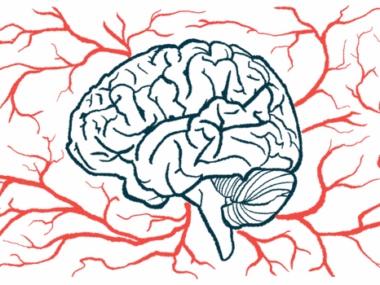ASOs Rescue Brain Rhythms, Sleep Patterns in Angelman Mouse Model
Effects of treatment were more pronounced in young mice than adults
Written by |

Using antisense oligonucleotides (ASOs), that is, strings of genetic material, to target a molecule known as UBE3A-ATS rescued abnormal brain rhythms and sleep patterns in a mouse model of Angelman syndrome.
Although treatment effects were found in both juvenile and adult mice, they were more pronounced in the juveniles.
“If ASOs therapy can reduce sleep disturbance, then it will improve quality of life for both Angelman syndrome patients and caregivers,” the researchers wrote in the study, “Antisense oligonucleotide therapy rescues disturbed brain rhythms and sleep in juvenile and adult mouse models of Angelman syndrome,” was published in eLife.
Generally, everyone inherits one copy of the UBE3A gene from each biological parent. Both copies are active in most cells, but in some brain regions, only the copy from the biological mother is active.
In Angelman syndrome, the maternal UBE3A copy is missing, inactive or dysfunctional. Abnormal brain rhythms — typically measured by electroencephalogram (EEG) — and sleep disturbance are the disease’s two prominent clinical features.
ASOs are short strings of DNA or RNA that can control how much of a protein is produced in cells. UBE3A-ATS, known as an antisense transcript as it binds to a messenger RNA molecule and blocks its translation into protein, silences parental UBE3A gene activity in neurons.
“A promising therapeutic approach to treating Angelman syndrome is to reactivate the intact paternal UBE3A by suppressing UBE3A-ATS,” the researchers wrote.
Genetic approaches targeting UBE3A-ATS have been explored in mice and clinical trials of ASOs are underway. However, questions remain regarding the timing of therapeutic interventions, as evidence from animal studies indicates gene-targeted therapies may have to be administered before the age at which children are typically diagnosed with Angelman syndrome.
Also, it remains to be cleared up whether brain rhythm and sleep alterations with this disorder are reversible in juvenile and adult mice with Angelman syndrome-like syndrome since these would be clinically relevant developmental stages, the scientists noted.
Targeting UBE3A-ATS with ASO therapy
Researchers in the U.S., with investigators from Ionis Pharmaceuticals, generated a new mouse model of the disease, wherein the maternal UBE3A copy is absent. Juvenile and adult mice were injected with a single dose of ASOs that targeted UBE3A-ATS.
The team used two mouse-specific ASOs to decrease UBE3A-ATS levels — named Ube3a-as and Snord115. A third group was given a non-targeting ASO as a control.
In wild-type (healthy) mice, both UBE3A-AS and Snord115, given via intracerebroventricular (into fluid-filled cavities of the brain) injection, were found to boost the activity of the paternal Ube3a gene copy in the brain and lower messenger RNA molecules from Ube3a-ATS. Of note, Ube3a is a mouse form of UBE3A.
In juvenile Angelman mice, ASOs led to increased Ube3a protein levels at three weeks of injection — to about 28–71% of normal mice — in different brain regions.
Ube3a-ATS levels decreased by 29–73%, whereas messenger RNA levels from the Ube3a gene were up to 22–57% of the normal levels.
In particular, the Ube3a-as ASO outcomes remained stable for at least 10 weeks, whereas the Snord115 effects for gene activity and protein levels dropped markedly at six weeks of injection.
In adult mice, both ASOs significantly reduced Ube3a-ATS levels and increased Ube3a gene activity and Ube3a protein levels at three weeks. But the increase in Ube3a proteins at this age was slightly less effective in some brain regions than in juvenile animals, the scientists noted.
The effects of Ube3a-as ASO dropped modestly in adult animals over 10 weeks, again more evident with the Snord115 ASO.
Also, the Ube3a-as ASO broadly normalized EEG findings related to brain rhythm in juvenile mice, whereas adult mice only showed similar effects in a brain region called frontal cortex at three weeks after injection. This difference between the ASOs, the investigators noted, correlates with their difference in upregulating Ube3a proteins. In adult animals, both ASOs reversed the abnormal EEG rhythmic activity.
The ASOs injection also normalized sleep pattern in juvenile mice, as the time spent in the rapid eye movement stage (REM; characterized by brain activity increases and intense dreams) was similar to healthy mice. Its effectiveness in restoring sleep was lower in adult animals.
The results show a single injection of ASOs targeting Ube3a-ATS in an Angelman mouse model rescues prominent clinical features of the disease, but the therapy was shown to be more effective in juveniles than adults.
“The reversibility of disturbed EEG power spectrum and sleep may decrease over age, just like other neurological deficits,” the researchers wrote, adding the results indicate “the therapeutic window of genetic therapies for Angelman syndrome is broader than previously thought” and the clinical effectiveness of therapies could be evaluated using electroencephalogram power spectrum and sleep architecture.






